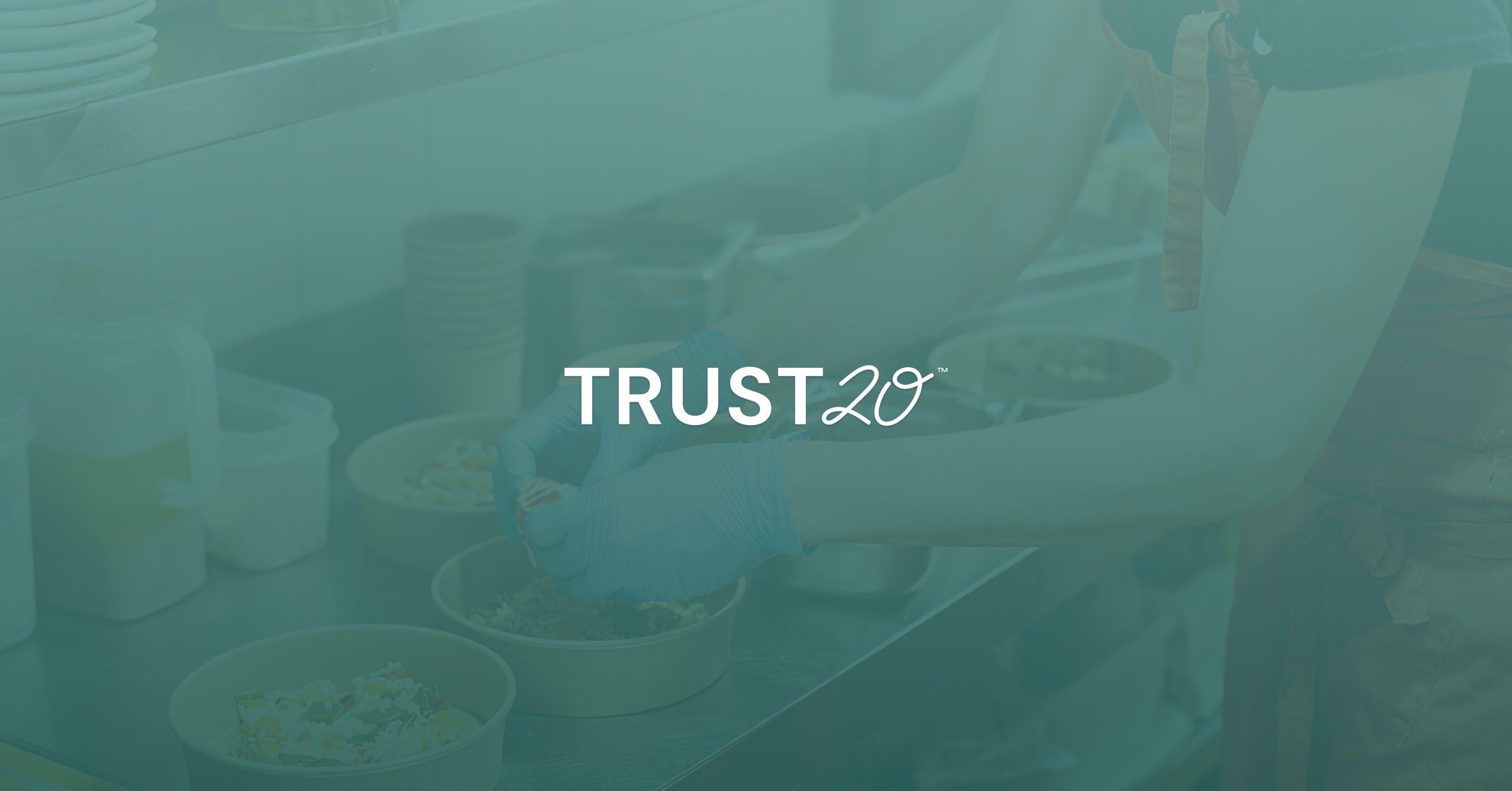Every foodservice establishment is required to have hygiene protocols in place to ensure cleanliness is a top priority in the daily operations of each business. The safety and health of staff and customers are key in any food business. Best practices are essential for maintaining a clean establishment. Best practices can also reduce the potential of cross-contamination while ensuring your business is in line with food safety regulations, which are overseen by international organizations, federal agencies, and local health departments such as the World Health Organization (WHO), U.S. Food and Drug Administration (FDA), and the Food Safety and Inspection Services (FSIS).
To ensure your establishment’s hygiene protocols meet current regulations and the most current methodology, it’s essential to audit best practices on a regular basis. The food industry is constantly evolving, and regular hygiene practice audits will help keep you and your establishment compliant with current standards.
Below, we’ll cover:
Why should I regularly review my establishment’s existing hygiene protocols?
How frequently should hygiene protocols be reviewed for food safety?
What areas of foodservice hygiene practices should I review on a regular basis?
What steps should I take when reviewing hygiene protocols?
Why should I regularly review my establishment’s existing hygiene protocols?
Regular review of foodservice hygiene protocols, including everything from personal hygiene to sanitation methods, is important to ensure establishments are able to maintain consistent food safety protocols and remain in compliance with local, state, and federal regulations. Both food safety protocols and regulations are subject to change over time, so it is critical to regularly review a foodservice establishment’s hygiene practices to keep procedures up-to-date.
By reviewing your existing protocols, you will help prevent foodborne illnesses, ensure your establishment’s regulatory compliance, and keep your staff informed about any changes they need to be aware of in your procedures.
How frequently should hygiene protocols be reviewed for food safety?
There is no specific timeframe guidance on how frequently hygiene protocol reviews should be conducted. However, a good rule of thumb is to regularly review your best practices. This may be annually, quarterly, or monthly, depending on each individual establishment.
Factors that might impact how frequently you review protocols include:
-
Type of foodservice business
-
Size of the business and team
-
Details of your menu
-
Staff hiring and turnover
-
Food safety regulation changes
What areas of foodservice hygiene practices should I review?
When auditing best hygiene practices, it’s important to review all areas included in your sanitation standard operating procedures (SSOPs). These procedures are required for foodservice establishments by FSIS and must include elements such as which staff member will perform certain tasks and a list of procedures that will be carried out before and during a business’s operating hours.1
In addition to elements required in the SSOP, foodservice hygiene protocols can be broken down into other categories—all of which you’ll want to review as well. These include:
-
Cleaning and sanitation procedures: Cleanliness in any foodservice establishment is key, especially for food contact surfaces, cutlery, and dishware. These procedures cover everything from proper cleaning of food contact surfaces to sanitation methods for dishware. Methodology may change over time, so it’s best to stay up-to-date with required cleanliness standards.
-
Personal hygiene protocols: Maintaining good personal hygiene among staff helps mitigate the potential transmission of foodborne pathogens that can adhere to skin and hair. From requiring staff to regularly wash their hands to ensuring proper work attire is worn, reviewing personal hygiene practices should be a priority during an audit, even if it's only to refresh your team’s memory.
-
Proper food storage: Adhering to best practices for food storage is crucial in preventing cross-contamination. One storage mistake can lead to the floodgates of contamination opening, so reviewing your establishment’s food storage protocols, from temperature control to ensuring garbage is never near food, is key.
-
Pest control: The FDA sets guidelines for pest control, including the requirement that establishments take reasonable measures to protect food contact surfaces, covered produce, and any food packaging materials.2 The foodservice industry has also developed standards for pest control to further promote high levels of hygiene. Both federal and industry-set standards are subject to change over time.
What steps should I take when reviewing hygiene protocols?
The most effective way to review your establishment’s hygiene protocols is to conduct regular internal audits. Internal audits extend beyond simply refreshing sanitation methods or reviewing personal hygiene guidelines when a new employee begins. Governed by the Food Safety Modernization Act (FSMA), internal audits serve as an in-depth assessment of an establishment’s food safety procedures and hygiene practices.3 An audit digs into the details of your existing best practices to find areas that need improvement and to ensure current procedures are being followed.
To begin the audit process, you can follow these steps:
-
Stay up-to-date with food safety regulations before you begin. This will help ensure you enter the audit with any new regulatory changes in mind that may need to be incorporated into your establishment’s protocols. Food safety regulations are constantly evolving, so this should always be your first step when reviewing hygiene protocols.
-
Give yourself enough time as you begin the auditing process. Reviewing hygiene protocols requires dedicated time and isn’t a process you should rush through.
-
Thoroughly review each area of your existing hygiene protocols—from cleaning and sanitation to food storage guidelines. Be sure to cover all processes and the accompanying documentation your establishment has in place. This will refresh your knowledge of what current protocols are and allow you to pinpoint where improvements or adjustments are needed.
-
Keep track of what has been reviewed, noting where adjustments are needed. Remember, an internal review of your hygiene protocols is more than just marking off a checklist—you want to look carefully at the elements that make up your protocols and determine if they’re working for your establishment. This will enable you to identify any existing procedures that may not be working effectively early on.
-
Consider interviewing staff members to collect additional perspectives. Your staff is familiar with your hygiene protocols in detail, particularly regarding their daily implementation, and can help provide a more comprehensive picture for your audit.
-
Once the audit is complete, it’s time to implement any adjustments needed. You can put together a plan on how to make adjustments, including:
-
-
Getting specific: clearly determine what practices need to be updated or adjusted.
-
Begin updating hygiene protocol documentation and guidelines.
-
Distribute resources, if appropriate, to your team, including posters, manuals, and other written materials about changes to existing protocols.
-
Provide training to staff—this might include workshops, online learning, or hygiene protocol refresher sessions to review any changes.
-
In addition to these steps, be sure to reach out and check with your federal and local health agencies to see if they have any required steps you need to take during the auditing and review process.
It’s time to review your team’s hygiene protocols and make adjustments as necessary.
Reviewing your establishment’s hygiene protocols regularly is critical to the success, safety, and cleanliness of all foodservice businesses. By ensuring your best practices align with current regulations and requirements, you can help keep staff and customers safe and healthy while preventing the spread of foodborne illnesses and cross-contamination.
By following the steps outlined here, begin your review process to audit your establishment’s hygiene practices and continue to maintain effective food safety procedures for your customers and staff.
Sources:
- USDA Food Safety and Inspection Service: Sanitation Standard Operation Procedures
- FDA: CFR-Code of Federal Regulations Title 21
- Food Safety Magazine: The Importance of Internal Audits






.png)

.png)
